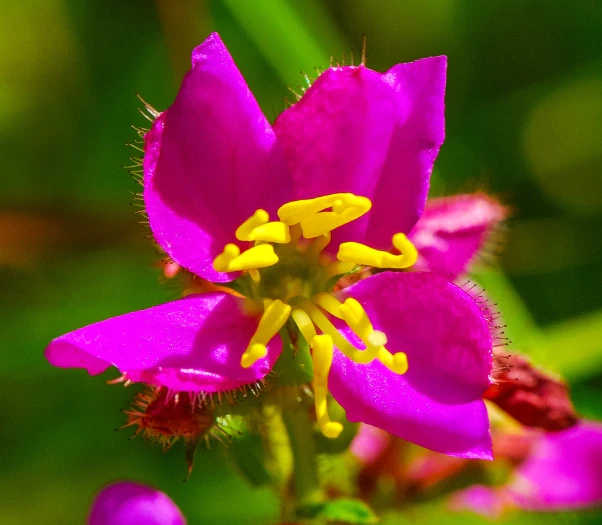Handsome Harry
(Rhexia virginica)
Handsome Harry (Rhexia virginica)
/
/

Joshua Mayer from Madison, WI, USA
CC BY-SA 2.0




















































Estimated Native Range
Climate Requirements for Wilmette, Illinois
| This Plant | Your Site | Plant Suitability for Your Location | ||
|---|---|---|---|---|
| • Precipitation | 32" - 78" | 36" | Aquatic | Aquatic |
| • High Temp. | 68°F - 95°F | 82°F | Your summer temperatures are normal for this plant. | Excellent |
| • Low Temp. | 2°F - 53°F | 15°F | Your winter temperatures are normal for this plant | Excellent |
Summary
Handsome Harry is valued for its striking flowers and ability to attract pollinators such as bees and butterflies, making it a beneficial addition to native plant gardens, rain gardens, and wetland restoration projects. It thrives in full sun to part shade and prefers consistently moist to wet soils with slow to medium drainage, mimicking its natural boggy habitat. While it is not commonly used in traditional landscaping, its ease of maintenance and tolerance of wet conditions make it a suitable choice for naturalistic plantings. Gardeners should be aware that Rhexia virginica can spread by rhizomes and may require management to keep it within bounds. It is not typically associated with serious diseases or pests, but can suffer in conditions that are too dry for its liking.CC BY-SA 4.0
Plant Description
- Plant Type: Herb
- Height: 1-2 feet
- Width: 0.5-1 feet
- Growth Rate: Moderate
- Flower Color: Pink, Purple
- Flowering Season: Summer, Fall
- Leaf Retention: Deciduous
Growth Requirements
- Sun: Full Sun, Part Shade
- Water: Medium, High
- Drainage: Medium, Slow
Common Uses
Bank Stabilization, Bee Garden, Border Plant, Butterfly Garden, Edible*Disclaimer: Easyscape's listed plant edibility is for informational use. Always verify the safety and proper identification of any plant before consumption., Low Maintenance, Salt Tolerant, Showy Flowers, Water Garden
Natural Habitat
Wet meadows, savannas, and open pine barrens
Other Names
Common Names: Virginia Meadow Beauty , Common Meadow Beauty , Virginia Meadow-Beauty , Rhexie De Virginie , Rhéxie De Virginie , Skär Ankarblomma
Scientific Names: Rhexia virginica , Rhexia virginica var. virginica , Rhexia virginica var. purshii , Rhexia stricta , Rhexia purshii , Rhexia septemnervia , Rhexia virginica var. septemnervia
GBIF Accepted Name: Rhexia virginica L.